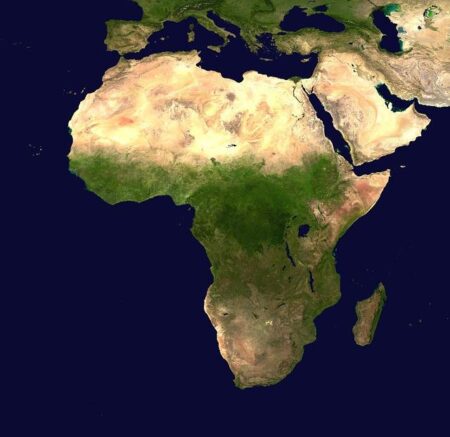Title: “Madagascar: The Role of European Civil Protection and Humanitarian Aid in Times of Crisis”
As Madagascar grapples with an array of challenges, from natural disasters to chronic food insecurity, the need for effective humanitarian assistance has never been more urgent. The island nation, known for its unique biodiversity and rich cultural heritage, faces an ongoing struggle against climate-related threats, including cyclones and droughts, which exacerbate poverty and displace communities. In response to these pressing issues, the European Civil Protection and Humanitarian Aid Operations (ECHO) has stepped in, delivering critical support and resources to the affected populations. This article delves into the scope and impact of ECHO’s interventions in Madagascar, highlighting collaborative efforts aimed at disaster preparedness, response, and recovery, all while addressing the underlying vulnerabilities that hinder long-term resilience. As the country navigates these turbulent waters, the partnership between European agencies and Malagasy communities underscores a collective commitment to fostering hope and rebuilding lives amid adversity.
European Union Initiatives Strengthen Madagascar’s Resilience Against Natural disasters
The European Union is making notable strides in enhancing Madagascar’s ability to withstand and recover from the impact of natural disasters.By integrating thorough risk management strategies, these initiatives focus on building a more resilient infrastructure and improving local capacity to respond to emergencies. Key components of this effort include:
- Disaster Risk Reduction Workshops: Training local authorities and communities in best practices for disaster preparedness.
- infrastructure Support: Funding for the construction of resilient buildings and roads that can withstand extreme weather events.
- early warning Systems: Implementation of advanced technologies to forecast natural disasters and facilitate timely evacuations.
Additionally, international collaboration plays a crucial role in bolstering these initiatives.The EU partners with local organizations and the Madagascar government to ensure that resources and training are effectively utilized. This includes:
- Community Engagement Programs: Encouraging active participation of local populations in disaster preparedness efforts.
- Funding and Resources: Provision of financial aid and supplies for emergency response activities.
- Monitoring and Evaluation: continuous assessment of the effectiveness of implemented strategies to adapt and improve future initiatives.
| Initiative | Focus Area | Impact |
|---|---|---|
| Disaster risk Reduction Workshops | Training | Enhanced community preparedness |
| Infrastructure Support | Construction | Stronger, resilient buildings |
| Early Warning Systems | Technology | Improved emergency response |
Assessing the Impact of Humanitarian Aid on Local Communities in Madagascar
Recent humanitarian aid initiatives in Madagascar have focused on various critical areas impacting local communities. The direct benefits observed include:
- Improved Access to Clean Water: Many regions have received infrastructure support,allowing for cleaner water supply systems.
- Enhanced food Security: Agricultural programs have increased crop yields, helping communities combat food scarcity.
- Healthcare Improvements: Aid has financed medical facilities, significantly enhancing healthcare access for remote populations.
Though, the long-term sustainability of these initiatives remains a concern. Local leaders express the importance of integrating community feedback into the design of aid programs. Key challenges reported include:
- Dependency on External Support: Some communities have become reliant on ongoing aid, risking their self-sufficiency.
- Cultural Misalignment: In certain instances, aid interventions have not aligned with local customs, leading to resistance.
- resource Allocation: Disparities in aid distribution have resulted in inequalities between neighboring communities.
strategic Recommendations for Enhancing Future Civil Protection Efforts in Madagascar
To fortify civil protection initiatives in Madagascar, a multi-faceted approach centered on collaboration and strategic resource allocation is essential. First, enhancing the local capacity for disaster response is crucial. This can be achieved through training programs for local emergency responders, emphasizing community engagement and resilience-building activities. Additionally, establishing partnerships with NGOs and international organizations can bring in expertise and resources that facilitate knowledge sharing and efficient response planning.
Investing in technology and data management systems will also play a pivotal role in future efforts.By deploying advanced early warning systems and utilizing geospatial data for risk assessment,stakeholders can improve preparedness and response times. Furthermore, fostering a culture of public awareness through educational campaigns will encourage community participation in disaster risk reduction measures. A comprehensive strategy that incorporates these elements can significantly elevate Madagascar’s civil protection framework and ensure a more resilient future.
To Conclude
Madagascar’s struggles with natural disasters and humanitarian crises underscore the critical role of international assistance in fostering resilience and recovery. The European Civil Protection and Humanitarian Aid Operations have not only provided immediate relief to affected communities but have also facilitated long-term development initiatives aimed at building lasting solutions.As Madagascar faces ongoing challenges, the commitment and support from European partners remain essential to enhancing the nation’s capacity to withstand future adversities. continued collaboration and targeted interventions will be pivotal in safeguarding the well-being of the Malagasy people, ensuring that hope and progress prevail in the face of adversity. as the world watches, Madagascar’s journey towards recovery highlights the importance of solidarity and adaptability in our increasingly interconnected global landscape.







